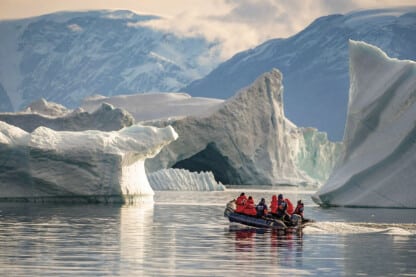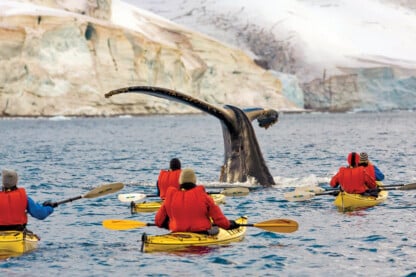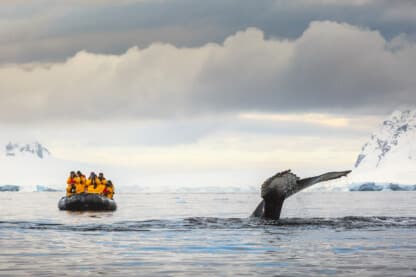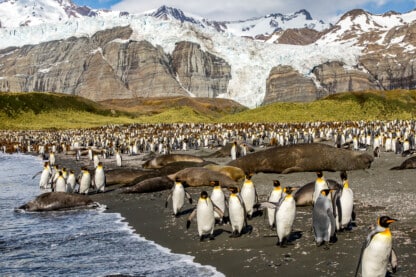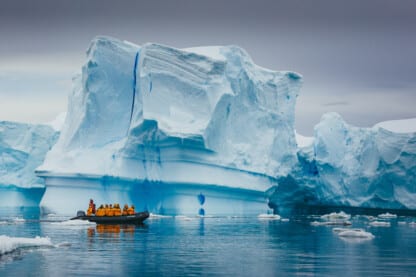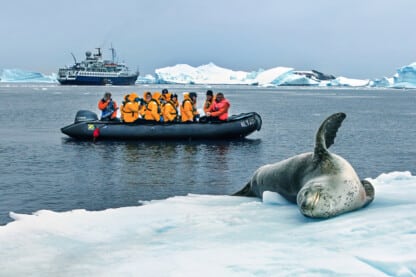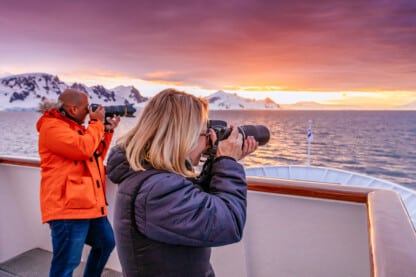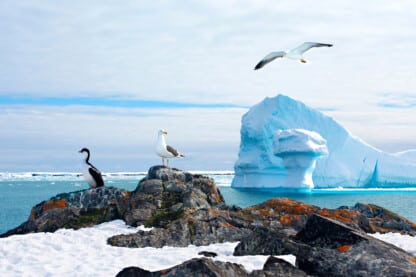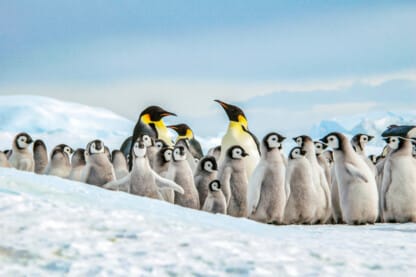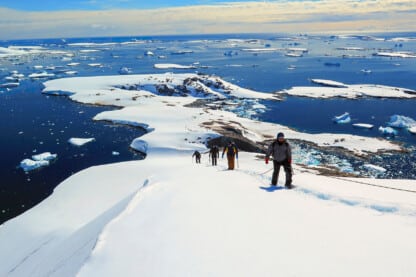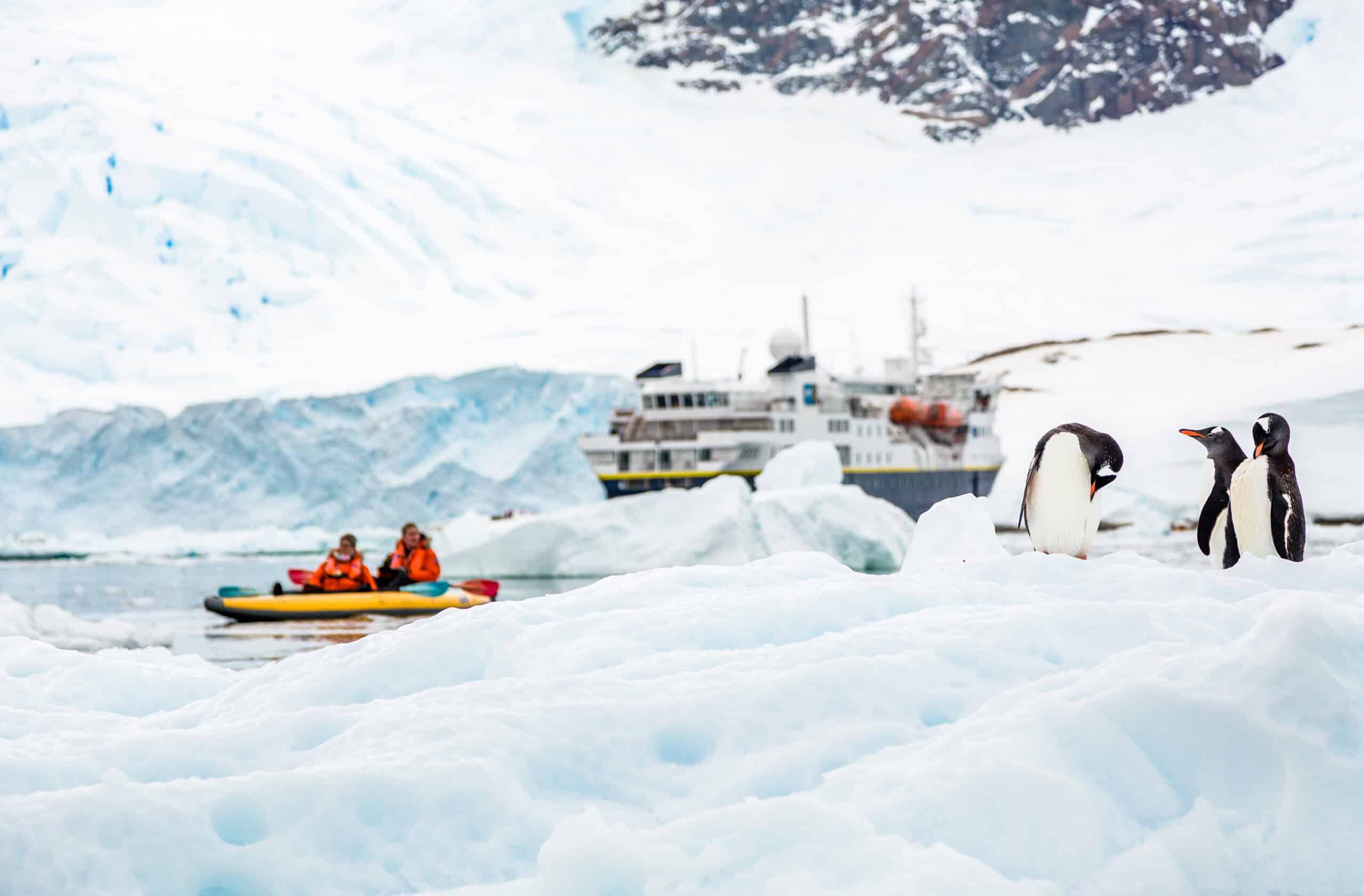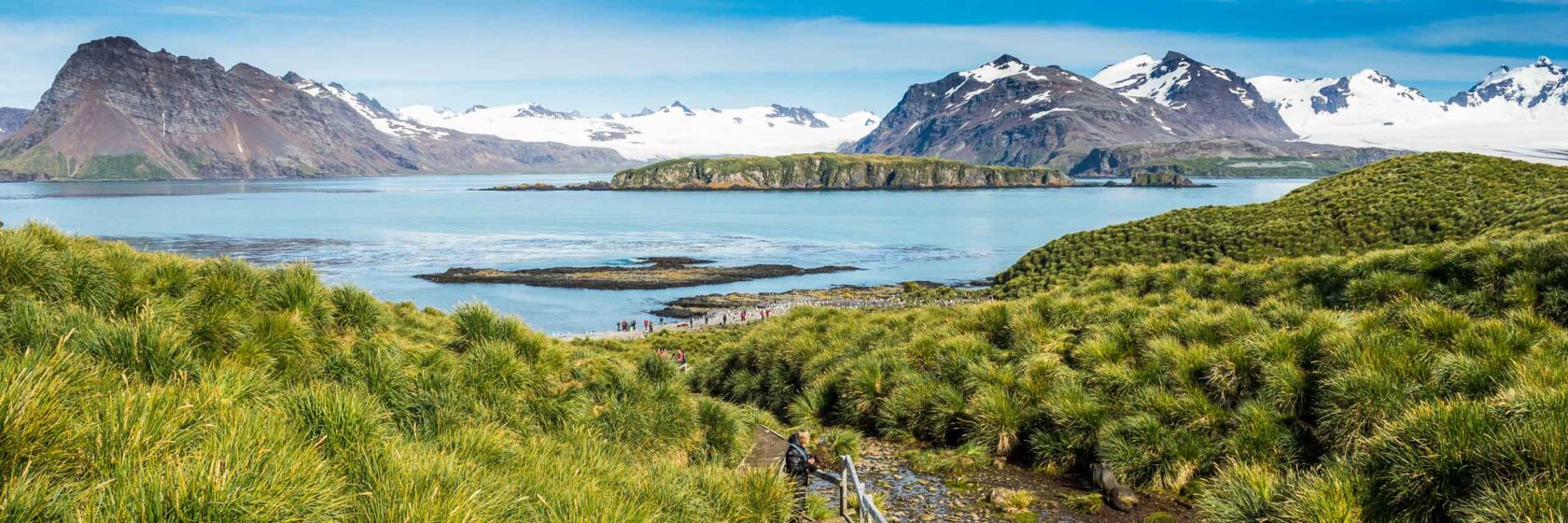
BROWSE ANTARCTICA TRIPS
Antarctica
The Best Time to Visit Antarctica
When to Go to Antarctica
The Antarctica Expedition Cruising season begins in late October (the Antarctic Spring) and continues through mid-March (the Antarctic Fall). Throughout this period you will be surprised with how mild the weather can be, with average daytime temperatures in the mid-30s°F ranging to highs in the 50s°F. While there is an abundance of wildlife and natural beauty throughout this time, there are differences in what wildlife is present through the Antarctic summer season.
Early Season (Late October to December)
Climate and Environment
- Visitors experience the reawakening of Antarctica after the long winter.
- Average temperatures will be a chilly 20-25°F in October, rising to 30-38°F by early December.
- The pack ice is beginning to break up and icebergs will be at their greatest mass.
- Although Antarctica is never crowded, this is a favorite time for many veterans as there are fewer ships exploring the Peninsula and South Georgia
Wildlife
- Many species of penguins and other austral birds will be returning, building nests, courting and tending to their eggs on the Peninsula.
- In the Falklands and South Georgia, elephant seals and fur seals will be congregating on the beach and establishing territories, often with dramatic fights for harems.
- In South Georgia, due to the long breeding cycle, adults and chicks congregate by the thousands as the colonies are continuously occupied year round. Hungry chicks loudly clamor to be fed while the males shuttle back and forth to the sea in the hunt for food.
- By early December, southern right whales and Antarctic minke whales begin arriving.
- There is great light for dramatic landscape photography.
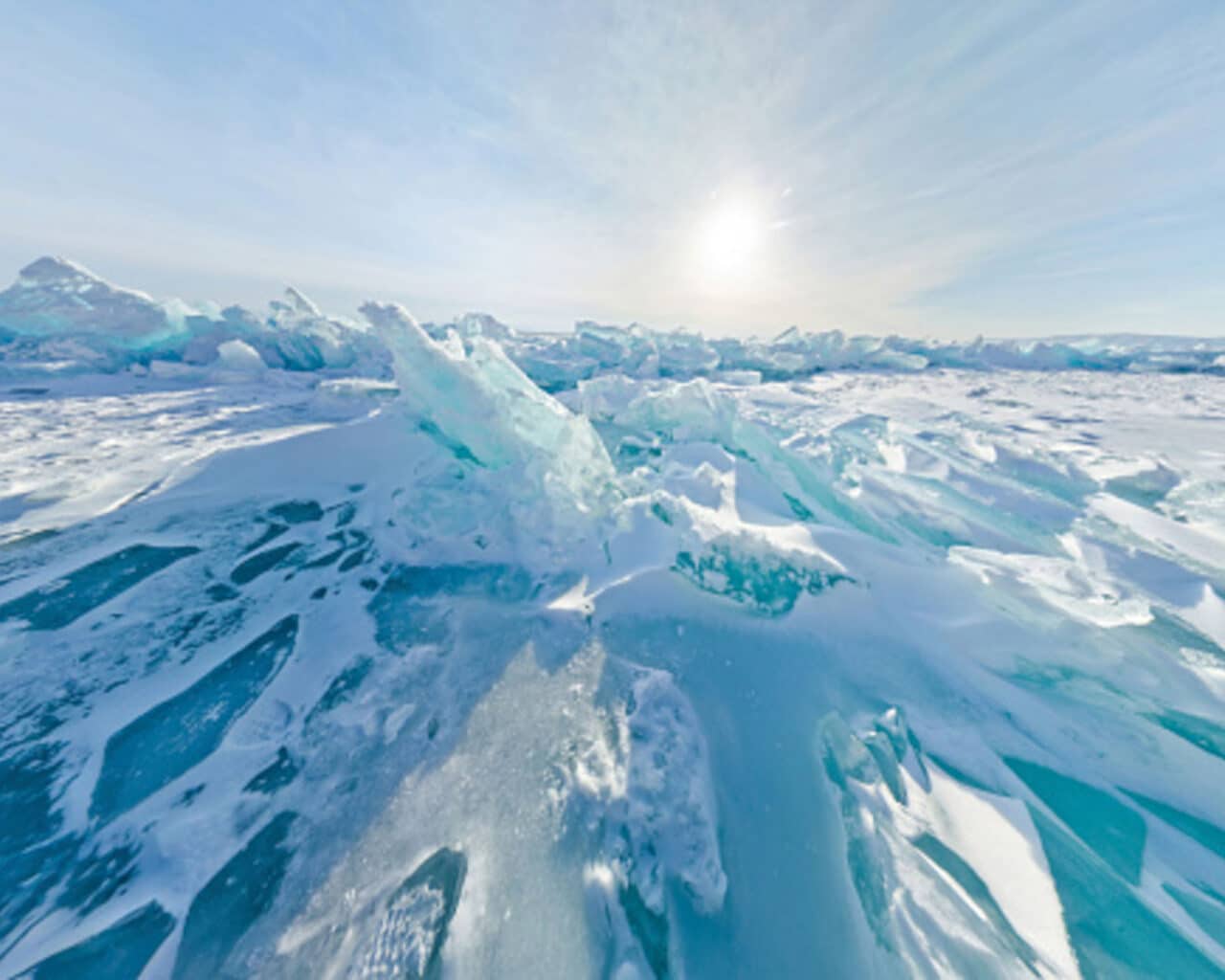
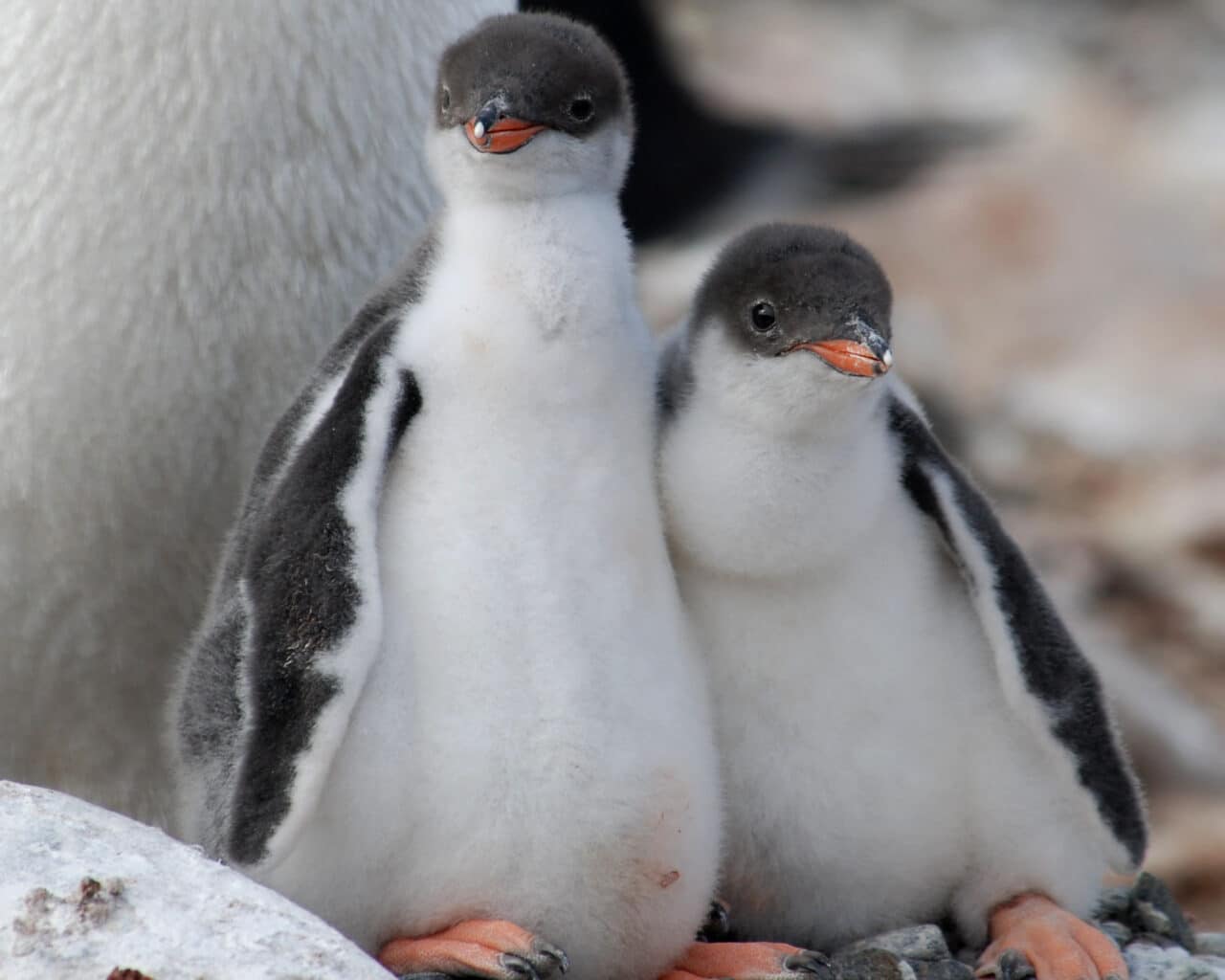
Mid Season (January to Mid-February)
Climate and Environment
- The days are magnificently long, with up to 20 hours of sunlight daily from late December to January.
- Average temperatures reach their highest ranges, from 30-45°F.
- The calmest seas tend to be found at this time.
- Sunlight and salt water begin to melt and erode icebergs, transforming them into ever-changing works of art.
Wildlife
- On the Peninsula, recently-hatched penguin chicks sporting thick warm coats will be loudly demanding food from their parents.
- Baby seals can be seen on the beaches, suckling from their mothers.
- Whale sightings, including humpbacks, minkes and orcas increase along the Antarctic Peninsula.
- Elephant seals begin their annual molt whereby they shed the outer layer of hair and skin. It will take a month and they’ll stay on shore fasting the entire time.
- Orcas begin their hunt for young seals and penguins who are now foraging on their own having left the nest.
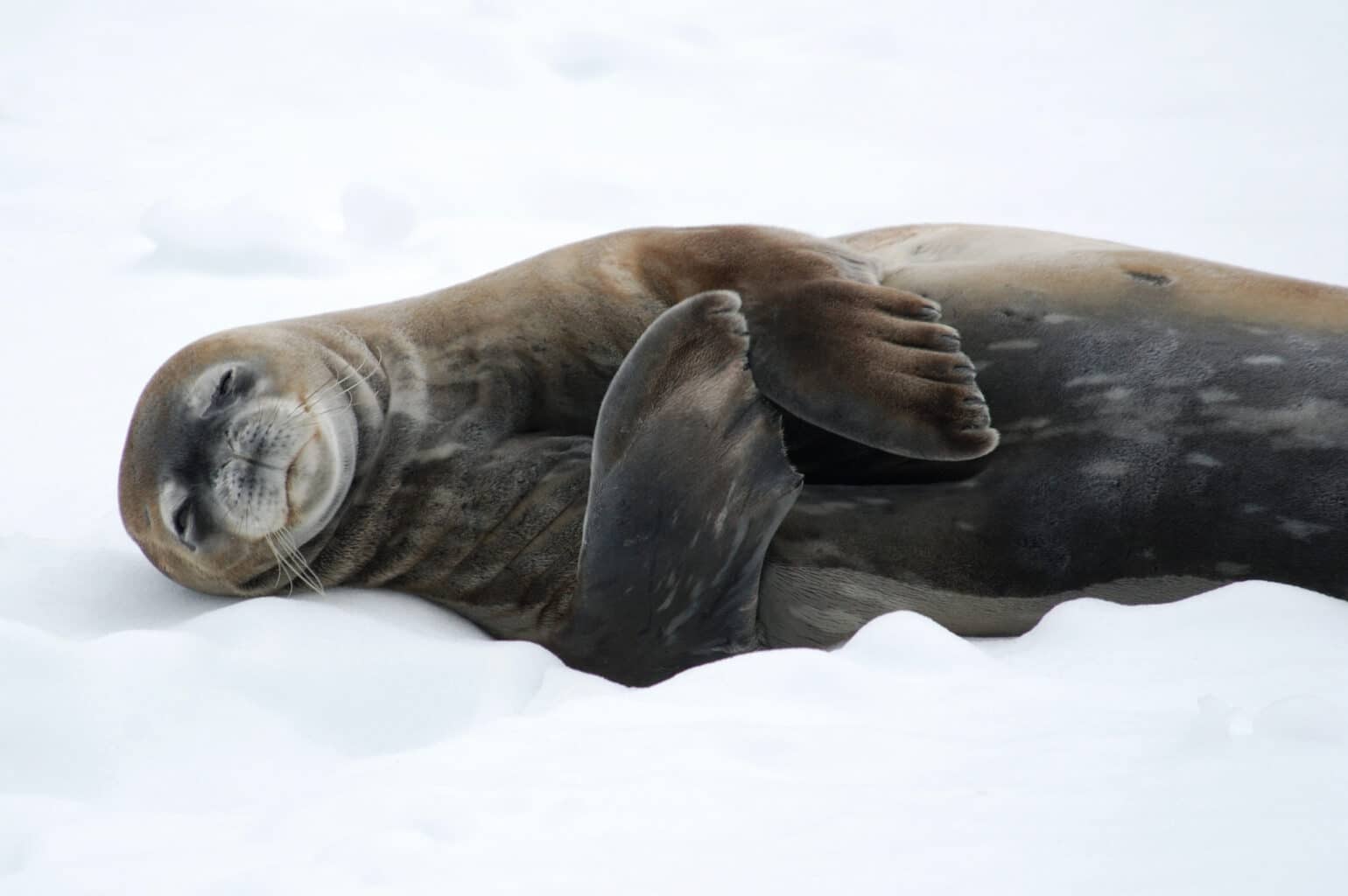
Late Season (Mid-February to March)
Climate and Environment
- As the pack ice recedes even further, our “Crossing the Antarctic Circle” itinerary will make its attempt to go south of the Polar Circle.
- More landing sites open up as the sea ice continues to recede.
- The days begin to get shorter once again and sunsets more spectacular.
Wildlife
- South Georgia Island’s king penguin rookeries are densely crowded with activity.
- Chicks are quite large and starting to fledge.
- On the Peninsula, you feel the tension and the race against time for penguins who got a late start, and have young who have yet to molt and forage on their own.
- This is when you get the best possibilities for whale watching.
- With the longer days of sunlight creating plankton blooms, we should enjoy excellent sightings of humpback and minke whales as they feed on plankton.
- Orcas continue their hunts of young seals and penguins.
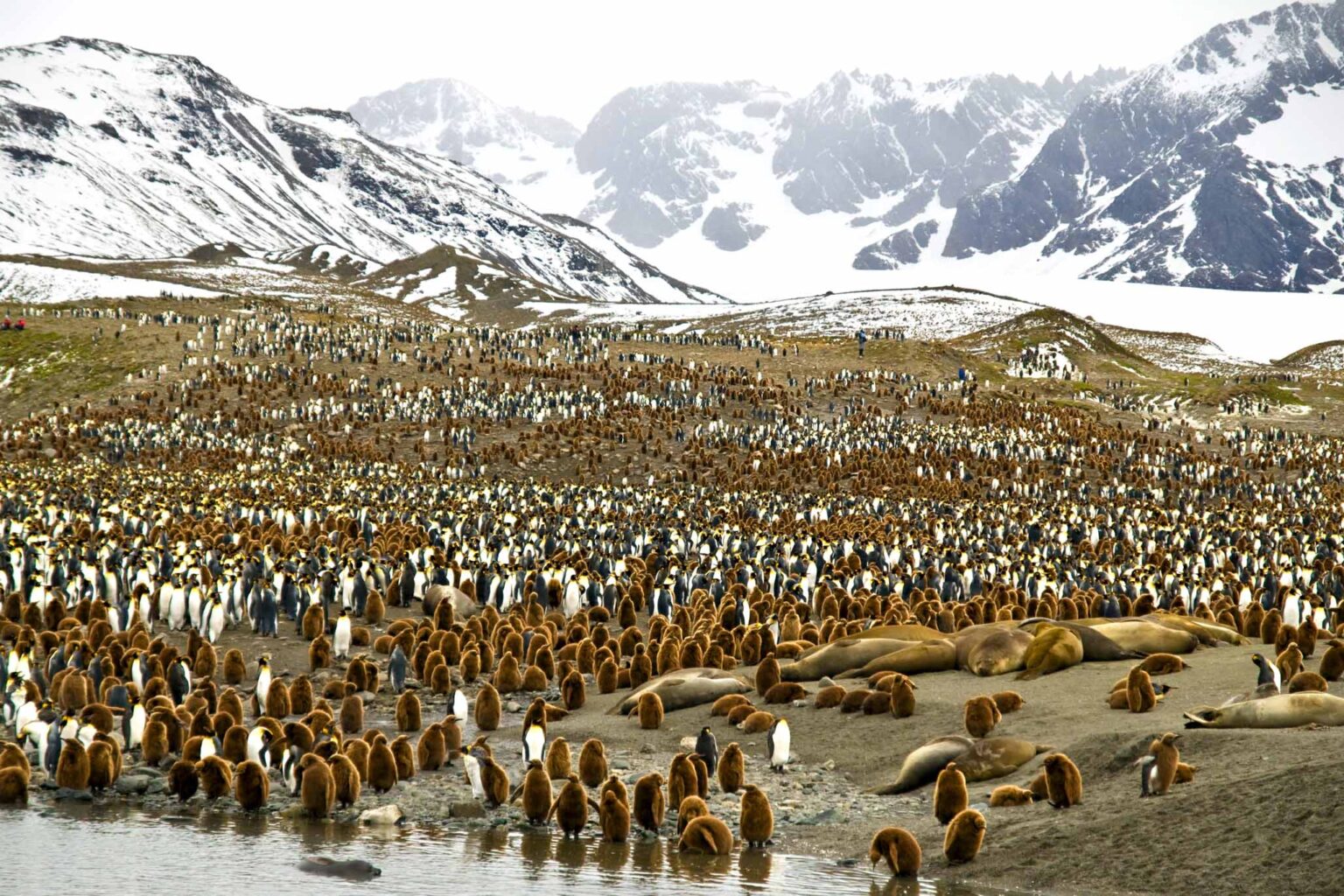
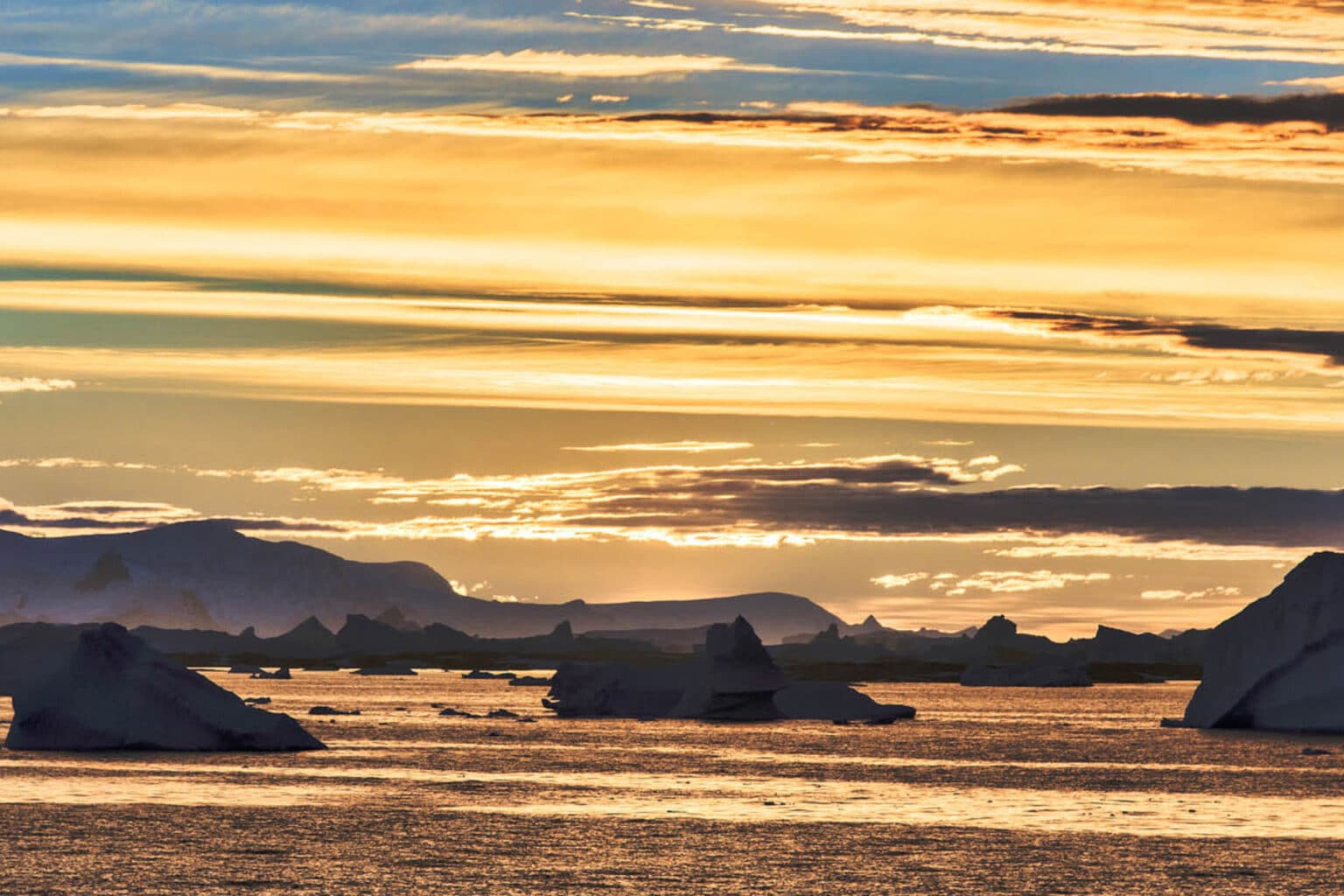
Learn More
Talk to an Expert
Our Polar Specialists know every detail about our Antarctica trips. They will be happy to answer any questions and help you choose the journey that’s right for you. Contact us to learn more or book your trip today!

